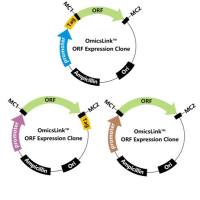Micropropagation of Helleborus through Axillary Budding
互联网
互联网
相关产品推荐

Bub1b Mus musculus budding uninhibited by benzimidazoles 1 homolog, beta (S. cerevisiae), mRNA (cDNA clone MGC:36092 IMAGE:4953223), complete cds.
询价

Bub1 Mus musculus budding uninhibited by benzimidazoles 1 homolog (S. cerevisiae) (Bub1), transcript variant 2, mRNA.
询价

Bub1 Mus musculus budding uninhibited by benzimidazoles 1 homolog (S. cerevisiae), mRNA (cDNA clone MGC:18385 IMAGE:3671932), complete cds.
询价

BUB1B Homo sapiens budding uninhibited by benzimidazoles 1 homolog beta (yeast), mRNA (cDNA clone MGC:31884 IMAGE:4649881).
询价

Bub1 Mus musculus budding uninhibited by benzimidazoles 1 homolog (S. cerevisiae) (Bub1), transcript variant 1, mRNA.
询价

